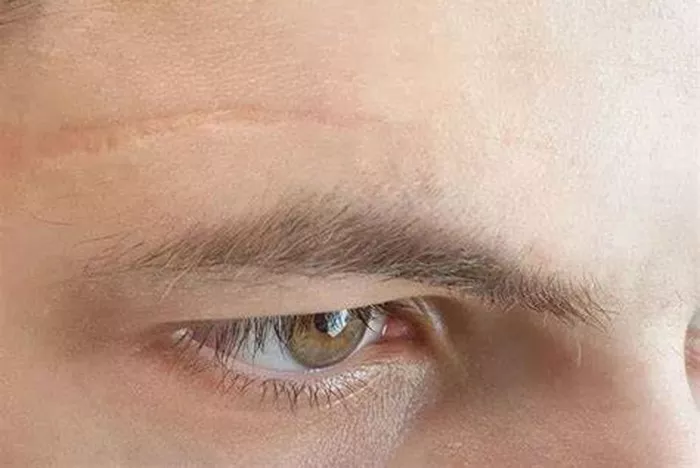Scarring is a natural part of the body’s healing process after an injury, surgery, or skin trauma. Typically, the skin forms a scar as it heals, eventually fading over time. However, for some individuals, scars may fail to heal properly, leaving behind unsightly, raised, or discolored marks. This can be frustrating, especially if the wound or injury has long since healed. If you’re wondering why your scars don’t seem to heal as expected, it’s important to understand the various factors that can affect scar formation and the body’s ability to repair itself. From genetics to underlying health conditions, many reasons can contribute to poor scar healing. This article explores why some scars fail to heal, the factors that influence scar formation, and what you can do to promote proper healing and improve the appearance of your scars.
Understanding the Healing Process
Before diving into why scars might not heal properly, it’s essential to understand the natural healing process of the skin. When the skin is injured, the body goes through several stages of healing to repair the damaged tissue. These stages include:
Hemostasis: This is the first stage of healing, where the body works to stop the bleeding. Blood vessels constrict, and blood clotting occurs to form a protective scab.
Inflammation: The second stage involves the body’s immune response to clear out bacteria, debris, and damaged tissue. Inflammation helps prevent infection and promotes the formation of new tissue.
Proliferation: During this phase, new tissue is formed, and collagen is produced to close the wound. This stage is crucial for scar formation.
Maturation: In the final stage, the new tissue matures and becomes stronger. This process can take weeks, months, or even years as the scar becomes less noticeable.
While this healing process is generally effective, some factors can interfere with the normal progression of these stages, leading to problematic or delayed scar healing.
Genetic Factors and Scar Formation
Genetics play a significant role in how your body heals after an injury. Some individuals are genetically predisposed to form hypertrophic scars (raised, thick scars) or keloids (overgrown scars that extend beyond the original wound). If you have a family history of keloids or abnormal scarring, you may be more likely to develop such scars yourself.
Keloid formation occurs when the body produces excess collagen during the healing process, causing the scar to grow beyond the wound site. Hypertrophic scars are similar, but they do not extend beyond the wound. These types of scars can be difficult to treat and may require medical intervention to reduce their size or appearance.
The formation of keloids or hypertrophic scars can be influenced by factors such as:
Skin color: People with darker skin tones are more likely to develop keloids or hypertrophic scars.
Age: Younger individuals tend to form more noticeable scars, as their skin is more elastic and produces more collagen during healing.
Injury location: Scars that occur in areas with more tension, such as the chest, shoulders, and back, are more likely to become raised or prominent.
If you have a genetic predisposition to abnormal scarring, it’s essential to be proactive in scar care and seek advice from a dermatologist or healthcare professional.
Inadequate Wound Care
Proper wound care is essential to ensure that a scar heals correctly. If a wound is not cleaned and treated appropriately, it can become infected or irritated, prolonging the healing process and increasing the likelihood of a visible scar. Inadequate wound care can also result in the formation of a hypertrophic scar or keloid.
Some common mistakes in wound care that can lead to poor healing include:
Not keeping the wound clean and dry: Infection can slow down the healing process and cause scarring.
Scratching or picking at the scab: This can reopen the wound, delay healing, and increase the risk of scarring.
Not moisturizing the wound: Dry skin can lead to itching, cracking, and discomfort. Applying a gentle, non-scented moisturizer can help keep the skin hydrated and support healing.
Not protecting the wound from the sun: Sun exposure can cause scars to darken and become more visible. It’s important to apply sunscreen to healing wounds to protect them from UV damage.
Proper wound care not only promotes healing but also helps reduce the likelihood of permanent scarring. Following a healthcare professional’s instructions and avoiding these common mistakes is crucial for optimal scar recovery.
Nutritional Deficiencies and Scar Healing
Nutrition plays a vital role in the body’s ability to heal itself. Scar formation requires adequate nutrients, especially those involved in collagen production and tissue repair. Deficiencies in certain vitamins and minerals can impede the healing process and lead to delayed or poor scar recovery.
Key nutrients involved in scar healing include:
Vitamin C: Vitamin C is essential for collagen production, a key component of the skin’s structure. A deficiency in vitamin C can impair wound healing and increase the risk of scarring.
Vitamin A: Vitamin A helps promote skin regeneration and the production of new skin cells, both of which are crucial for proper healing.
Zinc: Zinc is important for immune function and cell division, making it a vital nutrient for tissue repair and scar healing.
Protein: Adequate protein intake is essential for the formation of collagen and the repair of damaged tissue.
Vitamin E: Vitamin E is an antioxidant that helps reduce inflammation and promote the regeneration of skin cells.
If you have a poor diet or specific nutrient deficiencies, it’s important to address them to promote better wound healing. Eating a balanced diet rich in fruits, vegetables, lean proteins, and healthy fats can support your body’s natural healing process and reduce the risk of scarring.
Chronic Conditions and Scar Healing
Certain medical conditions can impair the body’s ability to heal wounds properly, leading to chronic or non-healing scars. Some of the most common conditions that affect scar healing include:
Diabetes: People with diabetes often experience poor circulation and slower wound healing. High blood sugar levels can impair the immune response, increasing the risk of infection and prolonged healing.
Autoimmune diseases: Conditions like lupus and rheumatoid arthritis can interfere with the body’s ability to repair skin damage, leading to poor scar healing and increased scarring.
Poor circulation: Conditions that affect blood flow, such as peripheral artery disease, can slow down the delivery of oxygen and nutrients to the injured area, delaying the healing process.
If you have a chronic medical condition that affects wound healing, it’s important to work closely with your healthcare provider to manage your condition and support proper scar recovery.
Infection and Scar Formation
Infection is one of the most common causes of delayed healing and abnormal scarring. When a wound becomes infected, it can cause the body to produce excess collagen, resulting in a thick or raised scar. Infection can also slow down the healing process, leading to a longer recovery time and more noticeable scarring.
To prevent infection, it’s important to:
Keep the wound clean: Gently wash the wound with mild soap and water and apply an antiseptic if recommended by your healthcare provider.
Watch for signs of infection: Redness, warmth, swelling, pus, or an increase in pain are all signs that a wound may be infected. If you notice any of these symptoms, contact your doctor immediately.
Avoid scratching or picking at the wound: This can introduce bacteria and cause infection.
Proper wound care, hygiene, and prompt treatment of infections are essential to reduce the risk of scarring and ensure proper healing.
Scarring from Surgery
Surgical scars are often more noticeable due to the nature of the incision and the way the skin is sutured together. While some surgical scars heal well, others may become raised, thickened, or discolored, depending on the surgical technique used, the location of the incision, and individual healing factors. Scar tissue from surgery can also be more prone to complications such as infection or poor collagen formation.
To promote better healing of surgical scars, it’s important to:
Follow post-operative care instructions: This includes keeping the wound clean, avoiding excessive movement of the area, and wearing compression garments if recommended by your surgeon.
Use scar treatments: Once the wound has fully healed, you can use scar treatment options like silicone gel sheets, which have been shown to help reduce scarring.
Conclusion
There are many factors that can contribute to why a scar may not heal properly, including genetic predisposition, inadequate wound care, nutritional deficiencies, chronic conditions, infections, and surgical complications. Understanding these factors and taking proactive steps to manage them can help improve the healing process and reduce the risk of permanent scarring. If you find that your scars are not healing as expected, it’s essential to consult a healthcare professional who can assess your situation and recommend the best course of action for optimal healing. With the right care and attention, most scars can fade over time, leaving behind only minimal reminders of the injury or surgery.
Related Topics





























